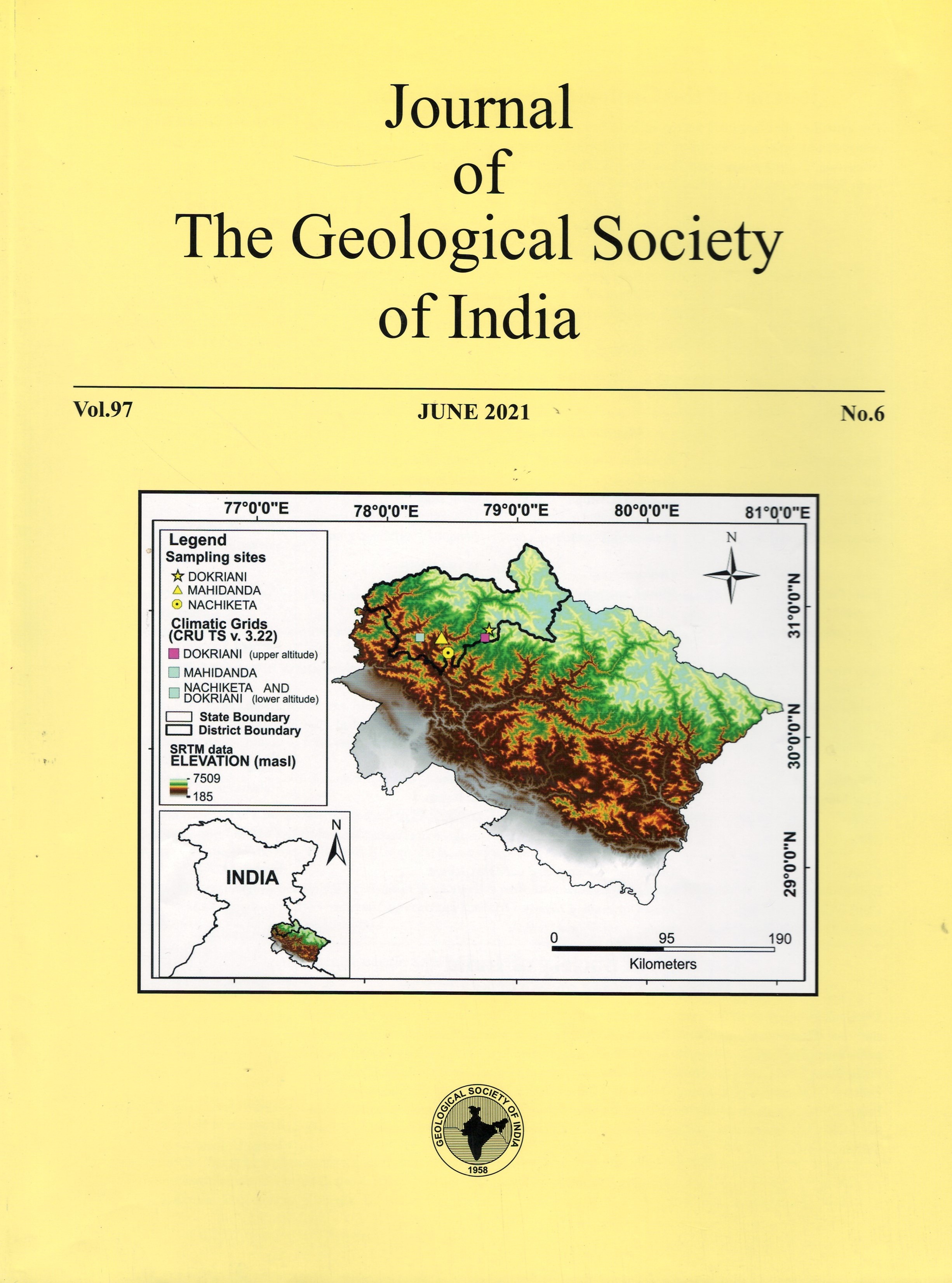The Anthropocene Concept
DOI:
https://doi.org/10.1007/s12594-021-1730-2Keywords:
No keywordsAbstract
No abstarct.
Downloads
Metrics
Issue
Section
Downloads
Published
How to Cite
References
Best, J. (2019) Anthropogenic stresses on the world’s big rivers. Nature Geoscience, v.12, pp.7-21.
Bretherton, F.P. and others (1986) Earth System Science: Overview: A program for Global Change, NASA Report.
Ellis, E. C. (2018) Anthropocene. A Very Short Introduction, Oxford University Press, 183p.
Ellis, E.C., Kaplan, J.O., Fuller, D.O., Vavrus, D., Goldewijk, K.K., and Verburg, P.H. (2013) Used planet: A global history. Proc. Nat. Acad. Sciences, v.110, no.20, pp.7978-7985.
Finney, S.C. (2014) The ‘Anthropocene” as a ratified unit in the ICS International Chronostratigraphic Chart: Fundamental issues that must be addressed by the task group. In Waters, C.N., Zalasiewicz, J., Williams, M, Ellis, M.A., and Snelling, A., eds., A stratigraphical Basis for the Anthropocene: The Geological Society, London, Special Publication, no.395, pp.23-28.
Finney, S.C., and Edwards, L.E., (2016) The “Anthropocene Epoch”: Scientific decision or political statement? GSA Today, v.26, no.3-4, pp.4-10.
Foley, S.F. and 19 others (2013) The Palaeoanthropocene- The beginnings of anthropogenic environmental change. Anthropocene, 3, pp.83-88.
Gibling, M.R. (2018) River systems and the Anthropocene: A Late Pleistocene and Holocene Timeline for human influence, Quaternary, v.1(3), 22; doi: 10.3390/quat1030021, pp. 1-36.
Goldin, I. (2014) Is the Planet Full? Oxford University Press, 260pp. Lenton, T. (2016) Earth System Science A very short introduction, Oxford University Press, 153pp.
Lenton, T.M. and 6 others (2008) Tipping Elements in the Earth’s Climate System, Proc. Nat. Acad. Sciences, V.105, no.6, pp.1786-1793.
Lewis, S.L., and Maslin, M.A., (2015) Defining the Anthropocene, Nature, v.519, pp.171-180.
Lewis S.L. and Maslin, M.A. (2018) The Human Planet. How we created the Anthropocene?, Pelican Books, 465pp.
Malhi, Y. (2017) The concept of the Anthropocene, Annual Rev. Env. and Res.,42, pp. 77-104.
Rockstrom, J. and 28 others (2009) Planetary boundaries: exploring the safe operating space for humanity, Ecology and Society,14, article 32 (34pp). Rockstrom, J. and Klum, M. (2015) Big world, Small Planet: abundance within Planetary Boundaries, Yale University Press.
Rudddiman, W.F., (2013) The Anthropocene, Ann. Rev. Earth Planet. Sci, v.41, pp. 45-68.
Ruddiman, W.F., Ellis, E.C., Kaplan, J.O., Fuller, D.Q. (2015) Defining the Epoch we live in (Is a formally designated “Anthropocene” a good idea?), Science, V.348, no. 6230, pp.38-39.
Schellenhuber, H.J. and Wentzel,V. (1998) Earth System Science. Integrating Science for Sustainability, Springer, Berlin. Schellenhuber, H.J. (1999) ‘Earth System’Analysis and the second Copernican revolution, Nature 402 (Suppl.): C19-C23.
Steffen, W., Crutzen, P.J., and McNeill, J, R. (2008) The Anthropocene: Are humans now overwhelming the great forces of nature, Ambio, v.36, no.8, pp.614-621.
Steffen, W., and 18 others (2015) Planetary boundaries: Guiding human development on a changing planet, Science, v.347, no.6223, pp.1-9.
Steffen, W., and 15 others (2018) Trajectories of the Earth System in the Anthropocene, Proc. Natl. Acad. Sciences, v115, no.33, pp.252- 259.
Steffen, W. and 7 others (2020) The emergence and evolution of Earth System Science, Nature Rev. Earth Environ., v.1, pp.54-63.
Syvitski, J.P.M. and 10 others (2009) Sinking deltas due to human activities, Nature Geoscience, v.2, pp.681-686.
Syvitski, J., and 17 others (2020) extraordinary human energy consumption and resultant geological impacts beginning around 1950 CE initiated the proposed Anthropocene Epoch, Communications Earth and Environment, doi:10.1038/ s43247-020-00029-y.
Tian, H., Banger, K., Bo,T., and Dadhwal, V.K. (2014) History of land use in India during 1880-2010: Large-scale land transformations reconstructed from satellite data and historical archives, Global Planetary Change, v.121, pp.78-88.
Walker, M.J.C., Gibbard, P.L., and Lowe, J., (2015) Comment on “When did the Anthropocene begin? A mid-twentieth century boundary is stratigraphically optimal” by Jan Zalasiewicz et al. (2015), Quaternary International, v.383, pp.204-207.
Waters, C.N and 23 others (2016) The Anthropocene is functionally and stratigraphically distinct from the Holocene, Science, v.351, no.6269, aad.2622.
Zalasiewicz, J. and 25 others (2015) When did the Anthropocene begin? A mid-twentieth century boundary level is stratigraphically optimal, Quaternary International, v.383, pp.196-203.
Zalasiewicz, J. and 20 others (2008) Are we now living in the Anthropocene? GSA Today, v.18, no.2, pp.4-8.

 S. K. Tandon
S. K. Tandon






